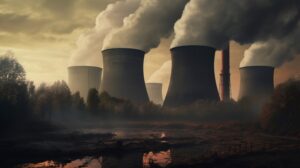When Germany shut down nearly half of its nuclear capacity in the week after Fukushima, critics charged that the country would only be importing more nuclear power from its neighbors as a result. Craig Morris says it is a physical impossibility.

Perhaps the best example of such claims is an article published in September 2011 by Der Spiegel. The opening paragraph sums up the argument well: “the country is now merely buying atomic energy from neighbors like the Czech Republic in France.” Later, we read that “the Czech nuclear industry went into the export business. These days, it’s sending roughly 1.2 gigawatts-hours of electricity across the border every day.”

Embarrassingly, it gets worse from there: “The country has gone from being an energy exporter to an energy importer practically overnight” – this sentence is wrong in two ways. First, electricity (what we are talking about here) is only one form of energy, which is generally broken up into heat, motor fuel, and electricity. In terms of energy, Germany has been a major net importer for a long time and will remain so for the foreseeable future.
But – second – since the nuclear phaseout of March 2011, power exports in Germany have boomed. Germany remained a net power exporter in 2011 (PDF). 2012 was a record year. So was 2013. 2014 in shaping up to be a fierce competitor for the title (PDF).
Spiegel also gets the situation wrong for Austria by claiming that the country “first imports inexpensive nuclear power from the Czech Republic,” stores it as pumped hydropower, and sells it to its neighbors “at a much higher price.” The article adds that Austria aims to expand this strategy in order to become an exporter to Germany by 2015. Apparently, Spiegel did not see another policy coming in Austria – the country completely banned imports of all nuclear power in the summer of 2013 starting in 2015.
Last year, I discussed the physical impossibility of Germany importing more nuclear power (follow that link for a discussion of France, and click here for Poland). Nuclear plants generally run at full capacity, meaning they cannot be ramped up any further – at least not significantly. Based on an extensive study published by Öko-Institut, I talk about how the nuclear phaseout of March 2011 does not even show up on power trading graphs or nuclear production in Germany’s neighboring countries, but here’s one I did not share with you back then – power trading with the Czech Republic.

This chart requires some explaining, so bear with me. The top green line represents nuclear power production within Germany. The blue vertical line shows when Germany shut off roughly 40 percent of its nuclear capacity after Fukushima. As we see, nuclear power production immediately fell, but – as chance would have it – a few power plants were also simultaneously scheduled for refueling two months later, so nuclear production was cut in half again – an event that did not cause any problems and went almost completely unreported. Within just 10 weeks, nuclear power production in Germany fell temporarily from around 18 GW to just over 5 GW, and nothing went wrong.
Moreover, power trading remained unaffected. Look at the two curves at the bottom. The red line shows commercial trading (think of it as actual purchases); the blue one, physical trading (think of it as shipping – chocolate I purchase from Brussels may pass through France to reach me in southwest Germany, but it would show up under physical, not commercial trading, for the French). Before March 2011, it looks like Germany was already purchasing Spiegel’s “1.2 gigawatts-hours” from the Czechs. There does not seem to be a lot of change in the ten weeks after 11 March 2011, when German nuclear power production is cut by two thirds. Something weird seems to be going on around October 2011, but nothing special is happening with German nuclear power production then.
Here’s the situation between Germany and France at the time just to complete the picture:

Clearly, the overall power trading situation (both commercial and physical) between Germany and France and between Germany and the Czech Republic does not seem to change much relative to German nuclear power production. Indeed, it cannot, as the following chart shows:

Here, we see nuclear power production (the big beige area) in France in March 2011. German nuclear power production is not shown here, and it is hard to see any effect at all. Like those in the Czech Republic, France’s nuclear plants run full blast whenever they can. If the Germans need additional electricity, they cannot get it from French and Czech nuclear plants.
The result of this situation has been massive overcapacity in Germany, which not only has to serve its own peak demand, but also help out its neighbors when demand is highest. Surrounded by inflexible baseload power plants, Germany exports when demand is high and imports when demand is low. Not surprisingly, the value of an exported kilowatt-hour from Germany was greater than the value of one imported in 2012 (the data for 2013 have not yet been published).

No German nuclear plant is within 30 kilometers of a neighboring country, and only three of them are within 80 kilometers. But France and Switzerland have installed four nuclear plants within 30 kilometers of the German border, and six are within 80 kilometers if we include the Czech Republic.
So no, Germany has not imported more nuclear power from abroad during its nuclear phaseout. We do, however, continue to run the risks. From my home in Freiburg, Germany, it is 25 kilometers as the bird flies to France’s oldest nuclear plant – and around 60 kilometers to the world’s oldest in Switzerland. Needless to say, if you buy a house here, no insurance firm will cover you against a nuclear accident. Nuclear remains un-insurable.
Source: Energy Transition. Reproduced with permission.








